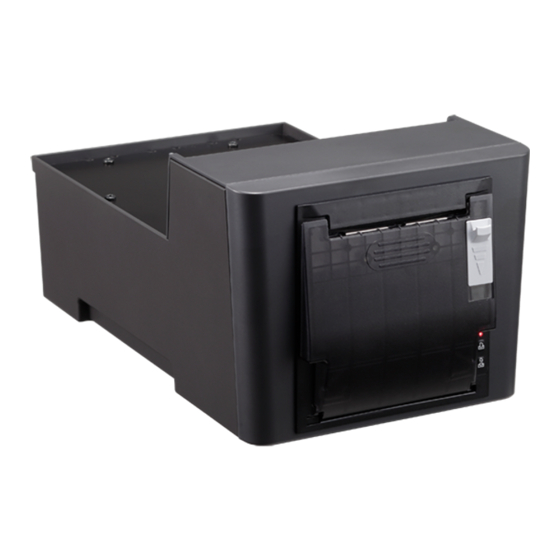Canon 6830010 Kullanıcı Kılavuzu - Sayfa 31
Yazıcı Canon 6830010 için çevrimiçi göz atın veya pdf Kullanıcı Kılavuzu indirin. Canon 6830010 37 sayfaları. Thermal receipt printer

Appendix
About Preprinted Paper
When preprinting paper with the mark for position detection or a logo,
note the following precautions.
About Mark For Position Detection
Print the mark for position detection on the heat-sensitive side of
paper, as shown in the illustration below. The mark size should be
5 ± 0.5 mm in height × 10 mm in width or greater.
Leading edge
Mark
Heat-sensitive side
The mark should be black, with reflection density of 7% or smaller
and a PCS value of 0.9 or greater.
When printing the mark, use oil ink. Make sure that the mark has
uniform ink density.
Also, it is recommended that you overprint the mark to have a higher
PCS value.
About Mark Detection Area
Do not print anything other than the mark for position detection in the
mark detection area (10 mm in width starting from the right edge of
paper). If you have no other choice, however, select the type of ink so
that reflection density is 80% or greater in the operating wavelength
range of a photointerrupter (700 to 1000 nm).
Mark detection area
5 ± 0.5 mm
10 mm or greater
Cautions About Preprinted Paper
Thermal paper has different characteristics than general printing
paper or carbonless copy paper. When printing on thermal paper,
note the following precautions.
Printing Method
Ink will dry slower on thermal paper. Use the UV printing method.
About Ink
• Select the type of ink that has no adverse effects on the thermal
printer, such as ink residues that adhere to the printer, thermal
printhead wear and sticking.
• Select the type of ink that contains 50 ppm or smaller Na and K ions
respectively, and 100 ppm CI ions.
Recommended ink: T&K TOKA RNC type
• The surface intensity of the thermal layer is weaker than that of
general printing paper. Take extra care about ink's Total Area
Coverage (TAC). Make sure that ink's TAC values are
approximately 6.0 for general thermal paper and are comparable to
those of carbonless copy paper for long term storage thermal
paper. However, ink will dry slower if the TAC values are lowered by
a reducer. Keep the amount of adding a reducer to 5% or smaller.
• Do not use too much ink. Doing so may result in poor coloring
performance or sticking when printing from the printer.
• Use ink materials that are heat resistant and have no heat reducing
effects. Also, use similar ink for the non heat-sensitive side.
• After printing, check that ink has adhered firmly to paper.
Additionally, UV ink is generally susceptible to emulsification. Take
extra care when managing dampening solution.
• Make sure that ink does not show through on the back side of paper
and there is no ink blocking.
• Make sure that ink will not come off due to water, alcohol, etc.
About Dampening Solution
Thermal paper tends to repel water. Take extra care when managing
dampening solution.
Isopropyl alcohol (IPA) contained in dampening solution is likely to
trigger color fogging if it is too much. Keep it to 5% or smaller for
general thermal paper, and 10% or smaller for long term storage
thermal paper.
31
